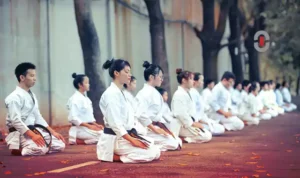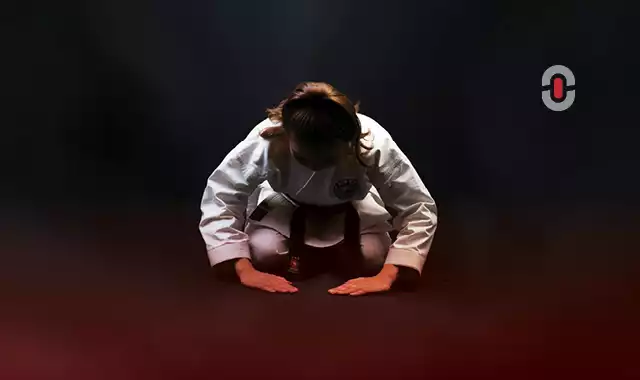Martial arts has a deep and complex history with sumo wrestling’s roots dating back all the way to 23 AD in Japan. Since then, numerous forms of martial arts have emerged and developed into the different types of combat sports we know today. But martial arts go beyond self-defense and combat.
They’re also unique in terms of their linguistic intricacies and philosophies. It is said that as much as language is “generative in nature and consists of definable parts and governing principles such as development, acquisition, and maintenance”, so too is martial arts. That’s why it’s considered a way of life for many as opposed to a mere physical activity that boosts strength, flexibility, balance, and coordination.
In this article, we explore the connection between language and martial arts, while also exploring the philosophies behind them in three different Asian countries: Japan, China, and South Korea. Keep reading to discover more.
Japan: Judo
Philosophy: It is believed that Judo is a type of martial arts that aims for maximum efficiency with minimum effort. It is also said that it can be likened to water and its various forms. From a calm lily pond to a stormy sea or even steam or a block of ice, Judo takes the physical being and transforms them into a non-resisting agent that flows like water in its liquid state, vital for every aspect of life. For this reason, Judo is often called the “gentle way”. Developed in 1882 by Jigoro Kano, “Kodokan Judo” focuses on flexibility, yielding, or an adroit way of philosophy. Today, Judo is accepted as an Olympic sport and is practiced worldwide.
Counting from 1-10: “Ichi, ni, san, shi, go, roku, shichi, hachi, kyu, ju!” – Japanese
Other Japanese martial arts
Because the Japanese martial arts scene is so rich and diverse, there are a few other types of martial arts that are worth mentioning, which we cover below.
- Aikido: Aikido was developed in the early stages of the 20th century and it means “the way of unifying with life energy” or “a way of the spirit of mutual harmony”. It is based on various systems, including Daito-ryu-aikijutsu, Kito-ryu-jujutsu, Goto-ha Yaguy jujutsu (all systems of hand-to-hand combat), and kenjutsu (the way of the sword. Its main purpose is the harmonious blending of the intrinsic human spirit. It emphasizes flowing and graceful technique, using the participant’s “qi” or “ki”–the internal, vital energy that everyone possesses.
- Jujitsu: Although it is probably more correct to call it “jujutsu”, Jujitsu gained popularity in the 1600s. In short, it refers to being adaptive, flexible or yielding as a skill or an art. It is considered one of the first martial arts disciplines in Japan. While some schools favor throwing and/or striking, others prefer submission. Today, there are many forms of Jujitsu being practiced in the world, either in traditional forms or through modern adaptations.
- Karate: Karate was developed in Japan in the early 1920s. It means “empty hand”, which emphasizes striking and kicking. There are various styles of karate that emerged in Japan, including Goju-ryu, Shito-ryu, Wado-ryu, etc. Its roots, however, date back to China in the 1500s.
- Kendo: Kendo is a modern adaptation of kenjutsu or “sword art”, practiced by the samurai before the Meiji era in Japan before 1868. Together with Judo, it is taught in Japanese public schools as a method of physical education. It involves participants wearing body and head protection and using bamboo swords for practice.
- Kempo/Kenpo: Loosely based on the Chinese martial art of Chuan fa, it involves punching and kicking. It involves different styles that are practiced both within Japan and in the rest of the world.
China: Kung Fu
Philosophy: “Kung fu” means skill achieved through hard work. It is considered both a form of exercise with a spiritual dimension, stemming from concentration and self-discipline and a primarily unarmed mode of personal combat.
Counting from 1-10: “Yī’, èr, sān, sì, wǔ, liù, qī, bā, jiǔ, shí!” – Chinese (Simplified)

Additional terminology:
- Sifu: A marker of skill and respect, it refers to the master who guides you in physical, moral, and philosophical teachings.
- Wushu: Refers to the sport and exhibition aspect of Chinese martial arts. It focuses on graceful movements and acrobatics together with martial arts techniques.
- Qi: Used in philosophy and medicine in Chinese, this is referred to as “life energy”.
- Taolu: It refers to the sequences or forms in Kung Fu, which are choreographed patterns of movements.
- Quan: It’s about the use of hands in combat and it means “fist”.
- Zhan Zhuang: Refers to standing meditation and is a practice for developing internal strength, balance, and a deep sense of grounding.
- Leitai: A raised platform where martial arts matches are held.
- Gong Li: The level of skill or power one has achieved in Kung Fu. It encompasses physical strength, technique, speed, accuracy, and understanding of Qi.
Korea: Taekwondo
Philosophy: Taekwondo, roughly translated, means to control one’s fists. It’s about using all parts of the body to stop physical conflict and help to build a more peaceful society. Originating in Korea, it primarily uses punches and kicks to defend oneself against physical attack. Today, there are many different types of Taekwondo, each of which follows a different emphasis, rules, forms, and other elements. In addition, today it is recognized as an Olympic sport.
Counting from 1-10: “Hanna, dul, set, net, dasot, yasot, elgob, yadol, ahop, yol!” – Korean
Conclusion
Despite the different forms of Asian martial arts today, one thing is clear. Each one is deeply rooted in a spiritual and philosophical underpinning, which guides a practitioner in a holistic way.
However, to understand the philosophy, one must also understand certain linguistic and cultural aspects of the specific form of martial arts that one is training in.
By understanding these important elements, it is more likely that you’ll work towards becoming a more well-rounded individual with a deeper understanding of self in relation to others in your community or environment.
